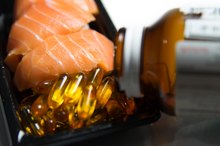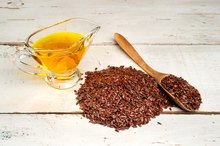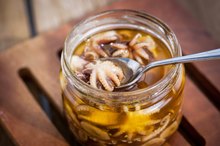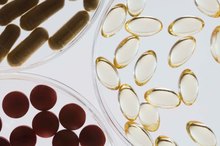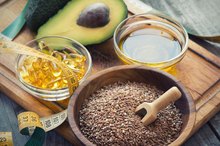What does fact checked mean?
At Healthfully, we strive to deliver objective content that is accurate and up-to-date. Our team periodically reviews articles in order to ensure content quality. The sources cited below consist of evidence from peer-reviewed journals, prominent medical organizations, academic associations, and government data.
The information contained on this site is for informational purposes only, and should not be used as a substitute for the advice of a professional health care provider. Please check with the appropriate physician regarding health questions and concerns. Although we strive to deliver accurate and up-to-date information, no guarantee to that effect is made.
Does Peanut Butter Contain Omega-3s?
Peanut butter is often recommended as a good source of healthy fats. The main types of fat in peanut butter are unsaturated. A 2-tablespoon serving of peanut butter contains around 16 grams of fat, of which 8 grams are monounsaturated and 5 grams are polyunsaturated. None of these polyunsaturated fats is in the omega-3 class, though some brands do fortify their peanut butter with omega-3s.
The Omegas
The two main types of omegas are omega-3 and omega-6. Both are important for a healthy, balanced diet, and you generally find omega-6 in plant sources and omega-3 in oily fish, as well as some plant sources. Ideally, your diet should contain a ratio of omega 6 to omega 3 fats of between 2-to-1 and 4-to-1. Peanuts actually contain a high amount of omega-6 and virtually no omega-3, notes Dr. Loren Cordain.
- The two main types of omegas are omega-3 and omega-6.
- Both are important for a healthy, balanced diet, and you generally find omega-6 in plant sources and omega-3 in oily fish, as well as some plant sources.
Omega-3 Benefits
How Much EPA & DHA Are in Chia Seeds?
Learn More
Omega-3 fats actually comes in three different forms. Oily fish contains omega-3 in the form of eicosapentaenoic acid, or EPA, and docosahexaenoic acid, or DHA. In plant sources such as flaxseed, however, omega-3 comes from alpha-linolenic acid, or ALA, which must be broken down into EPA and DHA before it can be used. According to the British Dietetic Association, the benefits from consuming more omega-3 include reducing the risk of heart disease and supporting growth and development 3.
- Omega-3 fats actually comes in three different forms.
- In plant sources such as flaxseed, however, omega-3 comes from alpha-linolenic acid, or ALA, which must be broken down into EPA and DHA before it can be used.
Get Fortified
As peanuts and peanut butter are generally devoid of omega-3 fats, manufacturers sometimes add omega-3s in to boost the health benefits. One brand includes omega-3 in its peanut butter in the form of added EPA and DHA, which doesn't change the taste, notes dietitian Tanya Zuckerbrot. If your peanut butter is fortified with omega-3, it will say so on the jar.
Regular Peanut Butter
Dizziness and Side Effects of Omega 3
Learn More
Just because regular peanut butter doesn't contain omega-3s doesn't make it a bad food. You get fiber, vitamins, minerals and heart-healthy unsaturated fats from peanut butter. Additionally, if you're eating oily fish or taking an omega-3 supplement regularly, it's unlikely you'll be deficient in omega-3, so you needn't worry particularly about looking for an omega-3-fortified brand.
Related Articles
References
Writer Bio
Mike Samuels started writing for his own fitness website and local publications in 2008. He graduated from Peter Symonds College in the UK with A Levels in law, business and sports science, and is a fully qualified personal trainer, sports massage therapist and corrective exercise specialist with accreditations from Premier Global International.

